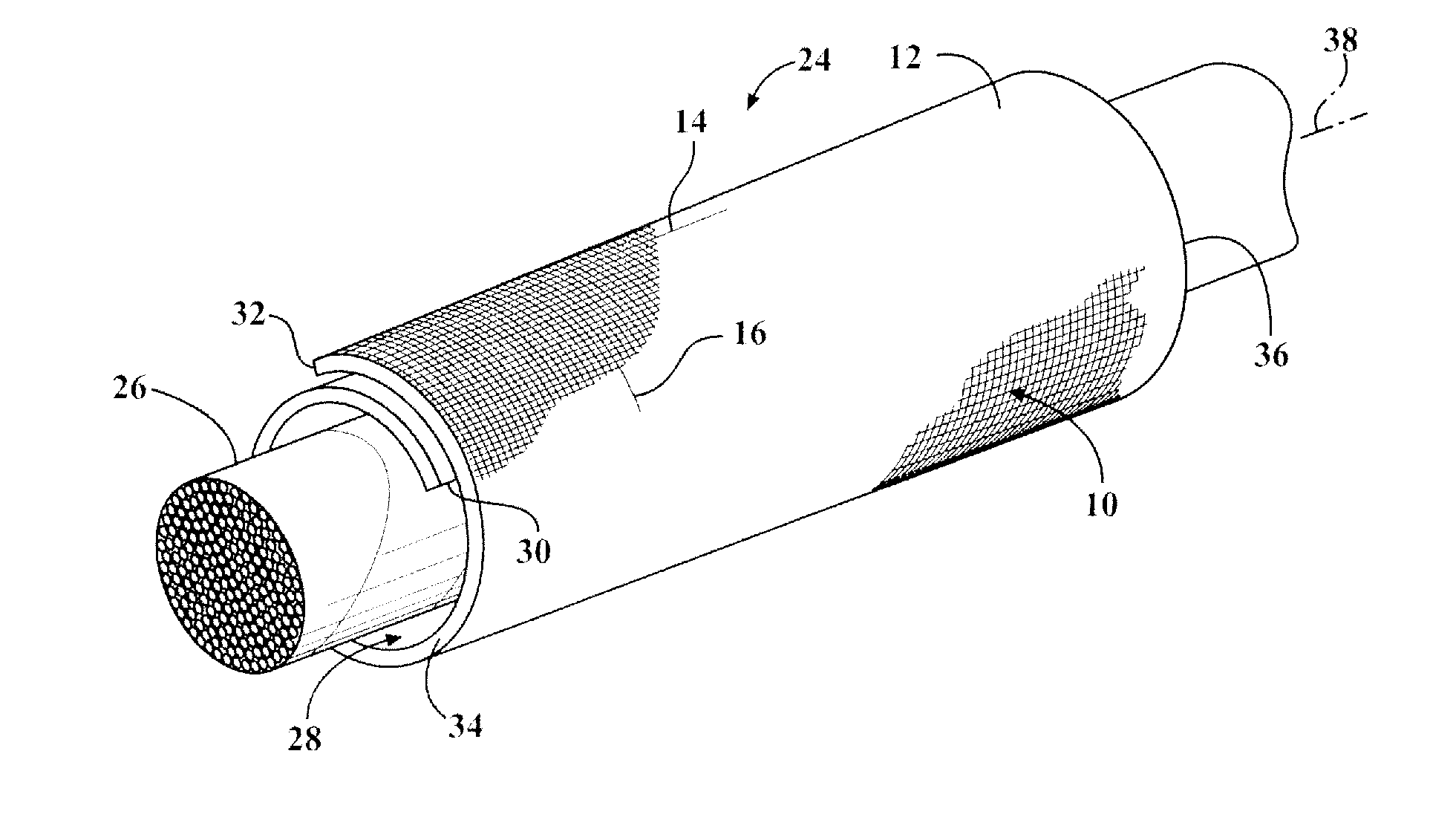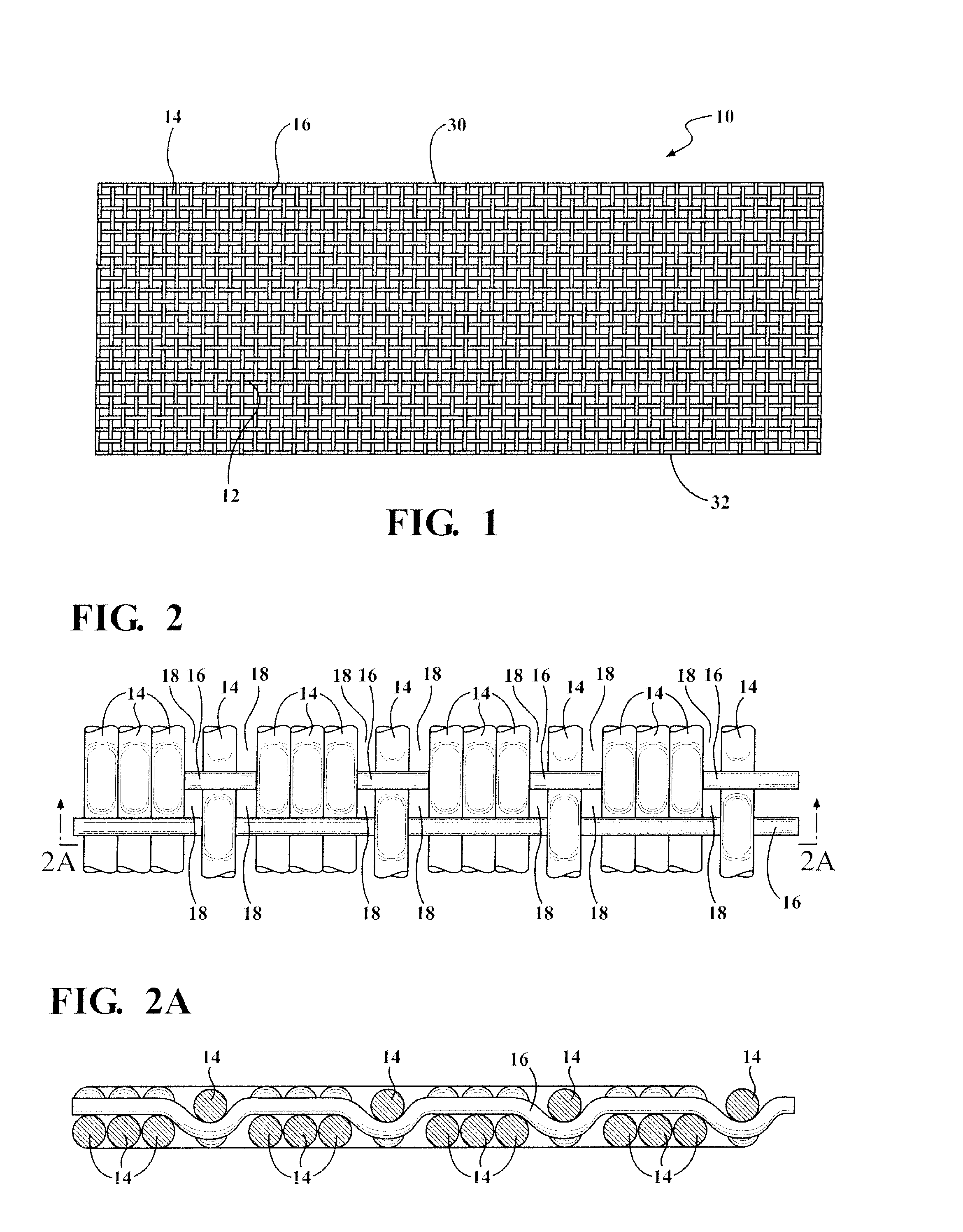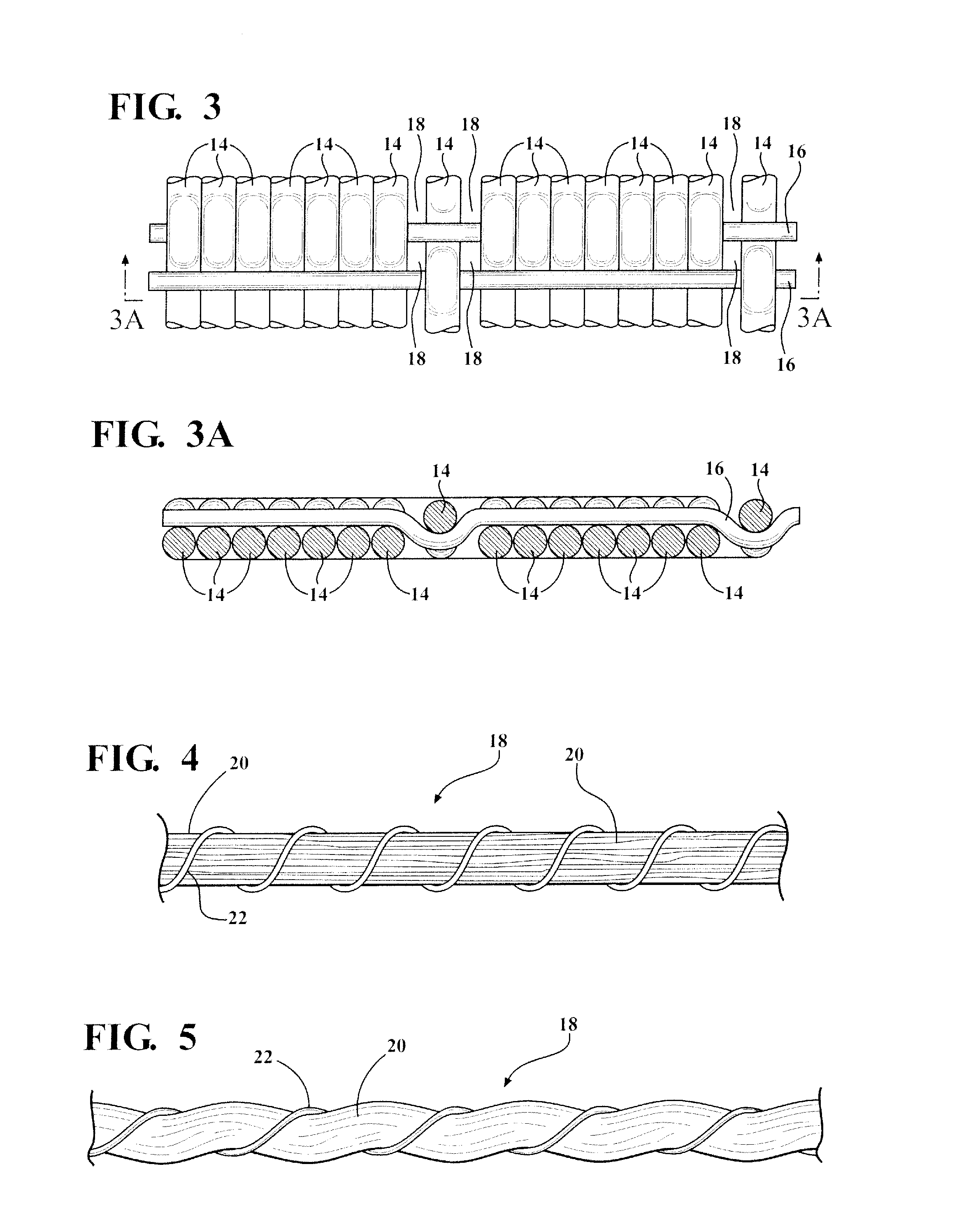EMI Shielding Textile Fabric, Wrappable Sleeve Constructed Therefrom and Method of Construction Thereof
a technology of textile fabric and shielding shielding, which is applied in the field of textile fabrics for providing protection against electromagnetic interference, can solve the problems of reducing the total conductivity provided by the yarns of the shielding shielding wall, and achieve the effect of enhancing the ability of the fabric to provide shielding protection against emi
- Summary
- Abstract
- Description
- Claims
- Application Information
AI Technical Summary
Benefits of technology
Problems solved by technology
Method used
Image
Examples
Embodiment Construction
[0032]Referring in more detail to the drawings, FIG. 1 shows a plan view of textile fabric 10 constructed in accordance with one aspect of the invention. The fabric 10 is constructed as an elongate wall 12 from lengthwise extending warp yarns 14 woven with widthwise extending weft yarns 16. At least some, a plurality, or all of the warp yarns 14 are electrically conductive and have a first diameter and the weft yarns 16 have a second diameter, wherein the second diameter is at about, and preferably at least 25 percent less than the first diameter. As such, upon weaving the fabric 10, the conductive warp yarns 14 are brought into closer proximity with one another than if the weft yarns 16 were the same size as the warp yarns 14, thereby enhancing the ability of the fabric 10 to provide shielding protection against EMI.
[0033]The fabric 10 can be woven in a plain weave pattern, however, this results in an increased number of openings 18 (with 2 opening being created at each intersectio...
PUM
| Property | Measurement | Unit |
|---|---|---|
| Fraction | aaaaa | aaaaa |
| Diameter | aaaaa | aaaaa |
| Electrical conductor | aaaaa | aaaaa |
Abstract
Description
Claims
Application Information
 Login to View More
Login to View More - R&D
- Intellectual Property
- Life Sciences
- Materials
- Tech Scout
- Unparalleled Data Quality
- Higher Quality Content
- 60% Fewer Hallucinations
Browse by: Latest US Patents, China's latest patents, Technical Efficacy Thesaurus, Application Domain, Technology Topic, Popular Technical Reports.
© 2025 PatSnap. All rights reserved.Legal|Privacy policy|Modern Slavery Act Transparency Statement|Sitemap|About US| Contact US: help@patsnap.com



